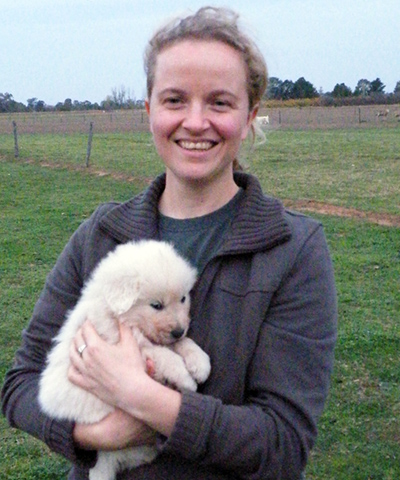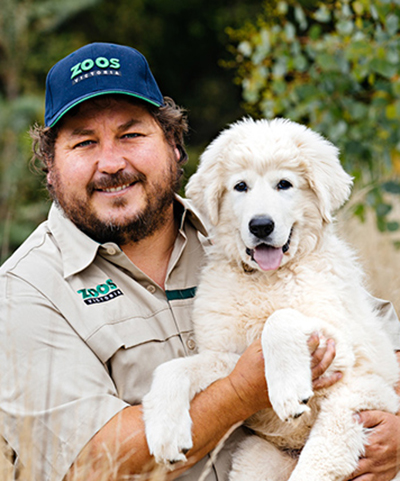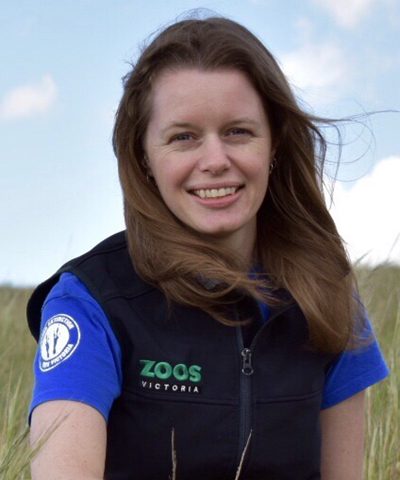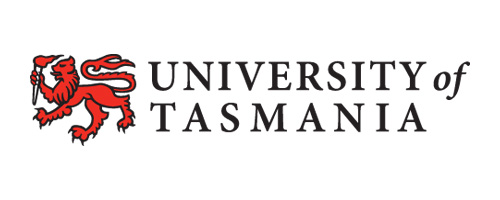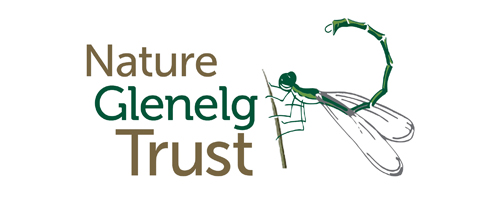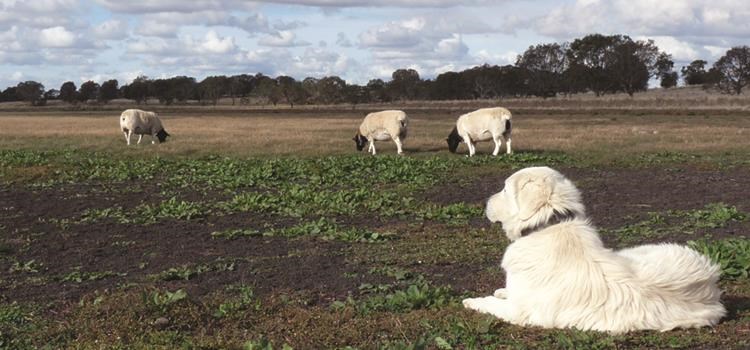
Project: 1.1.8
Livestock guardian dogs to protect threatened species and restore habitat
Project Leaders: Chris Johnson , Michael Magrath
Research in Brief
Livestock guardian dogs (LGDs) are conventionally used to protect livestock such as sheep from wild predators, such as foxes. We have shown that LGDs accomplish this by partially excluding foxes from LGD territories, and by suppressing the hunting behaviour of foxes. LGDs also reduce the local activity of over-abundant wild herbivores such as deer and kangaroos.
This project will test the value of these effects of LGDs on predators and herbivores to: 1) protect vulnerable native species from invasive predators; and 2) increase the success of ecological restoration by preventing the over-browsing of regenerating plant communities.
Why is the research needed?
This project addresses the following two conservation problems:
- Protection of native fauna from invasive predators in open landscapes.Australian conservation managers have demonstrated success in protecting wildlife by establishing predator-free havens (fenced reserves, or offshore islands). However, we have mostly been unable to sustain populations of predator-susceptible species in the vast areas outside those havens where removal of predators is not feasible.This means that populations of many threatened species remain small and restricted, and their ecological functions are lost from most of our landscapes.
- Cost and effectiveness of habitat restoration in the presence of wild large herbivores. Ecological restoration, in the form of revegetation of degraded lands, is becoming increasingly important in re-connecting fragmented landscapes, recovering threatened plant species and communities, and furnishing habitat for threatened animal species. However, it is often frustrated by over-browsing by large herbivores, whether native (e.g., kangaroos) or invasive (e.g., deer). Control of browsing by these animals is difficult and expensive, and may raise concerns over animal welfare. The problem is most severe in places where natural control of herbivore populations by predation (from dingoes) has been lost, and is worsening as a result of growing deer populations.

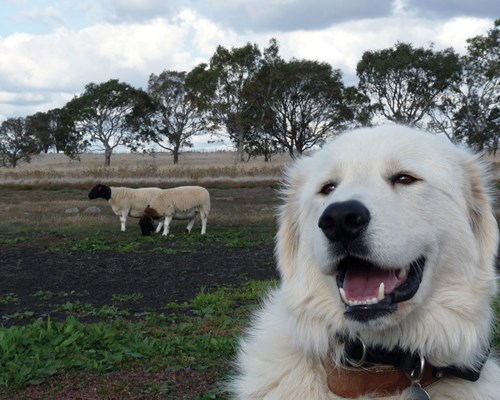
Maremma with GPS tracking collar. Photo: Linda van Bommel
How can the research help?
We will use experiments to test how deployment of LGDs affects the activity of invasive predators and large herbivores, and to evaluate the cascading effects of LGDs on animal populations and plant communities threatened by those predators and herbivores.
By measuring the magnitude of these effects of LGDs at landscape scale and in relevant land-use contexts, the project will demonstrate the practical feasibility of using LGDs to support conservation of threatened species and habitats.
The ultimate benefit of the project (if it is successful) will be in providing a new strategy for protection of species and habitats against key threats, that can be integrated with other land uses in production landscapes as well as deployed on conservation lands, and applied at low cost by private landholders.
What research activities are being undertaken?
The project has begun with support from an ARC Linkage grant (2016-2018). We have set up three trial sites to investigate the effects of LGDs on foxes and consequent survival of reintroduced eastern barred bandicoots. LGDs have been prepared for the project at a purpose-built facility managed by Zoos Victoria. Pre-release monitoring is complete, and LGDs are now being deployed, with bandicoot releases to follow over the next 12 months. We will continue this trial through 2019 and 2020, studying: behaviour of LGDs in relation to foxes and bandicoots; changes in activity, behaviour and space-use of foxes; and changes to demography of bandicoots.
We will extend the project to include use of LGDs to manage herbivore pressure in habitat restorations trials planned by Nature Glenelg Trust (NGT) on two of their recently acquired reserves in Victoria, and on private sheep farms near Canberra. NGT aims to restore the composition and function of grassland, grassy woodland, riparian woodland and wetland habitat, including key functional groups of plant and animal species. Studies of LGDs will investigate their effects on local movements, foraging behaviour and browsing impacts of eastern grey kangaroos and other potential overabundant herbivores such as deer, and how vegetation responds to changes in herbivore abundance and behaviour. The work on Canberra farms will test the effect of LGDs on distribution and local abundance of grey kangaroos in a predominantly farming landscape. 
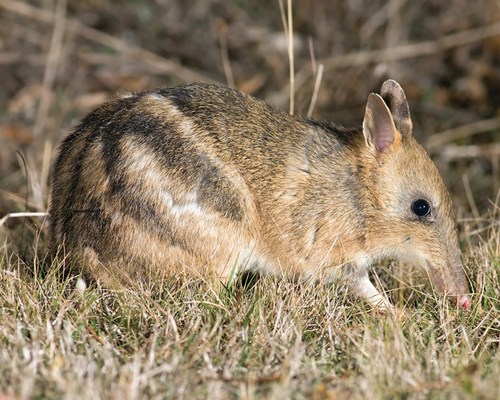
Eastern barred bandicoot. Photo: JJHarrison CC BY-SA 3.0 Wikimedia Commons
Who is involved?
The project is a collaboration between the University of Tasmania, Zoos Victoria and The University of Melbourne, with in-kind contributions from the Nature Glenelg Trust, Dunkeld Pastoral Co, Tiverton Property Partners and National Trust Victoria.
Where is the research happening?
The project will use a series of trial sites in western Victoria, at Mooramong, Tiverton, Dunkeld, and two restoration reserves located north-east of Dunkeld, the Walker Swamp Restoration Reserve and Long Point Restoration Reserve.
When is the research happening?
The project will run for three years from 2018 to 2021.
Further information
For more information please contact project leader:
Chris Johnson - c.n.johnson@utas.edu.au
Top image: Maremma accompanying sheep at the Mooramong trial site. Photo: Linda van Bommel



